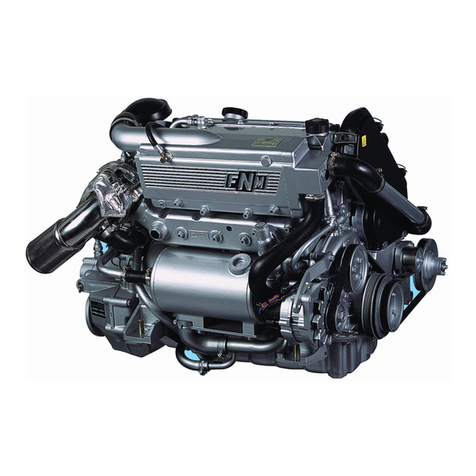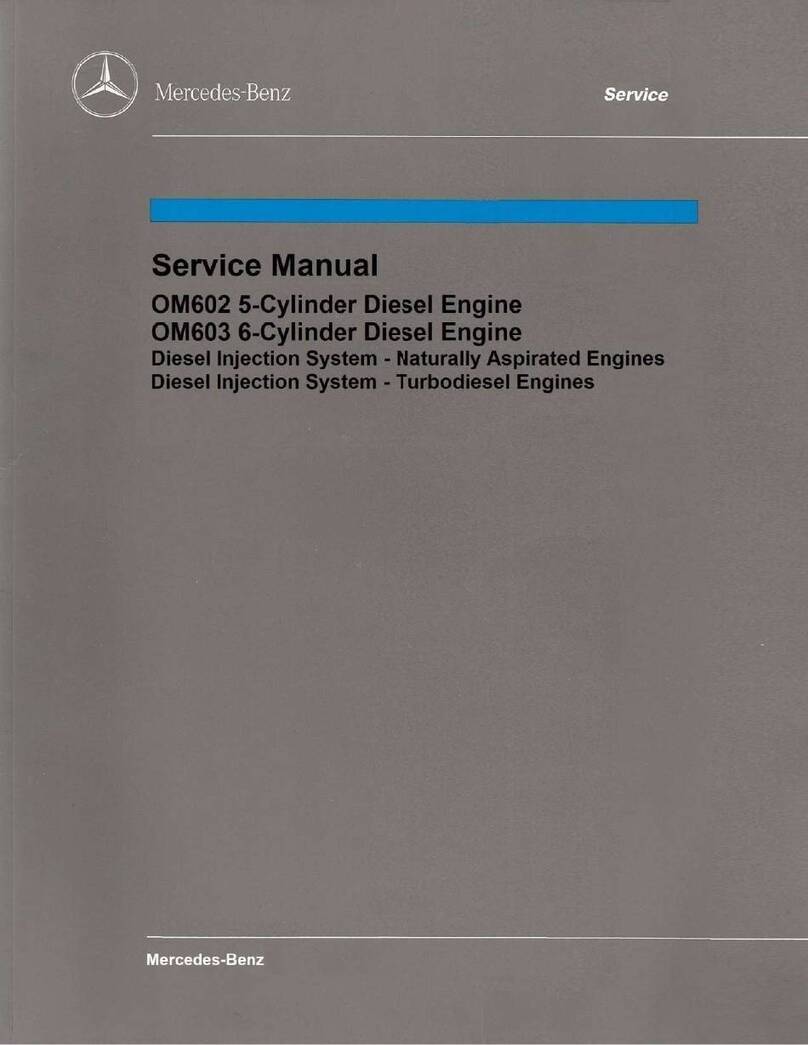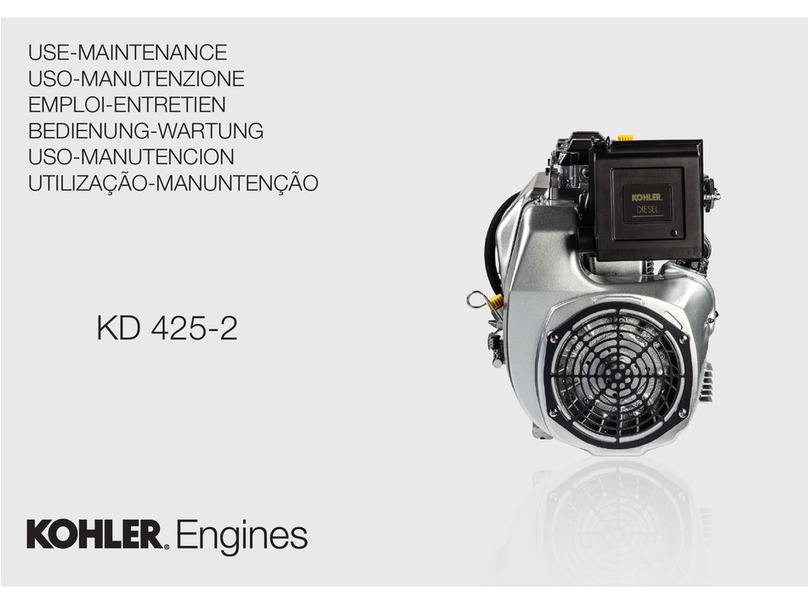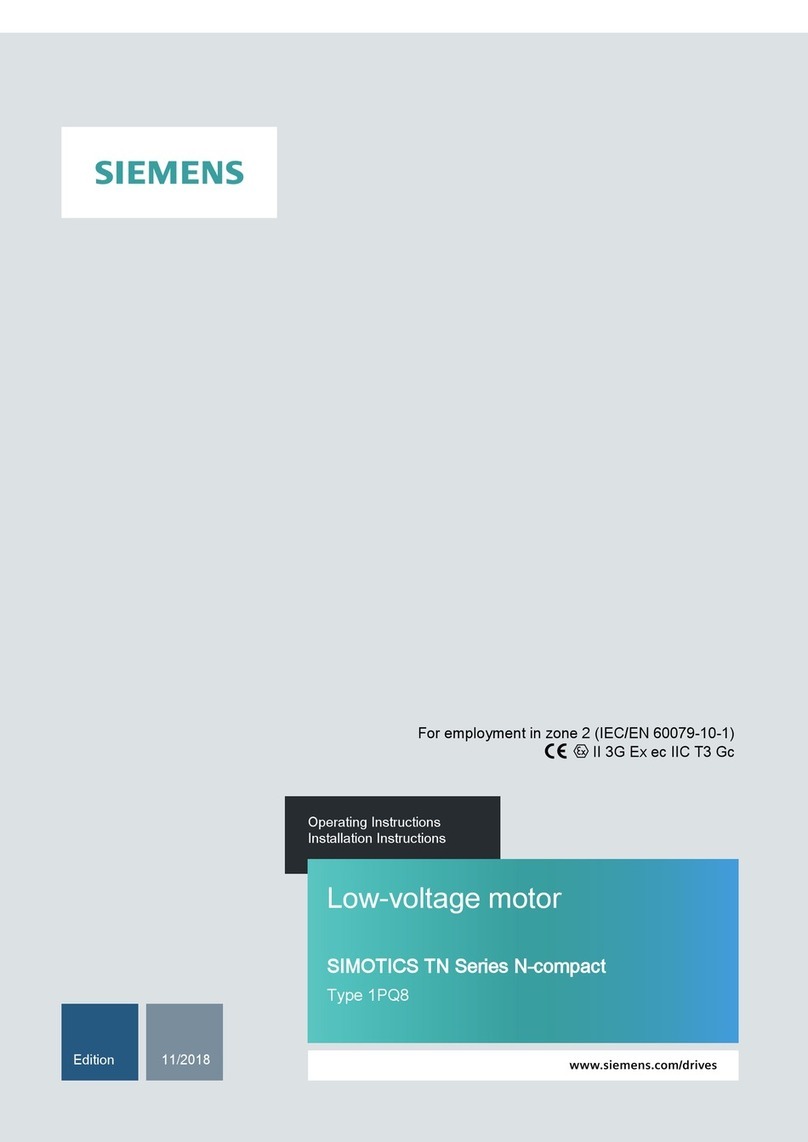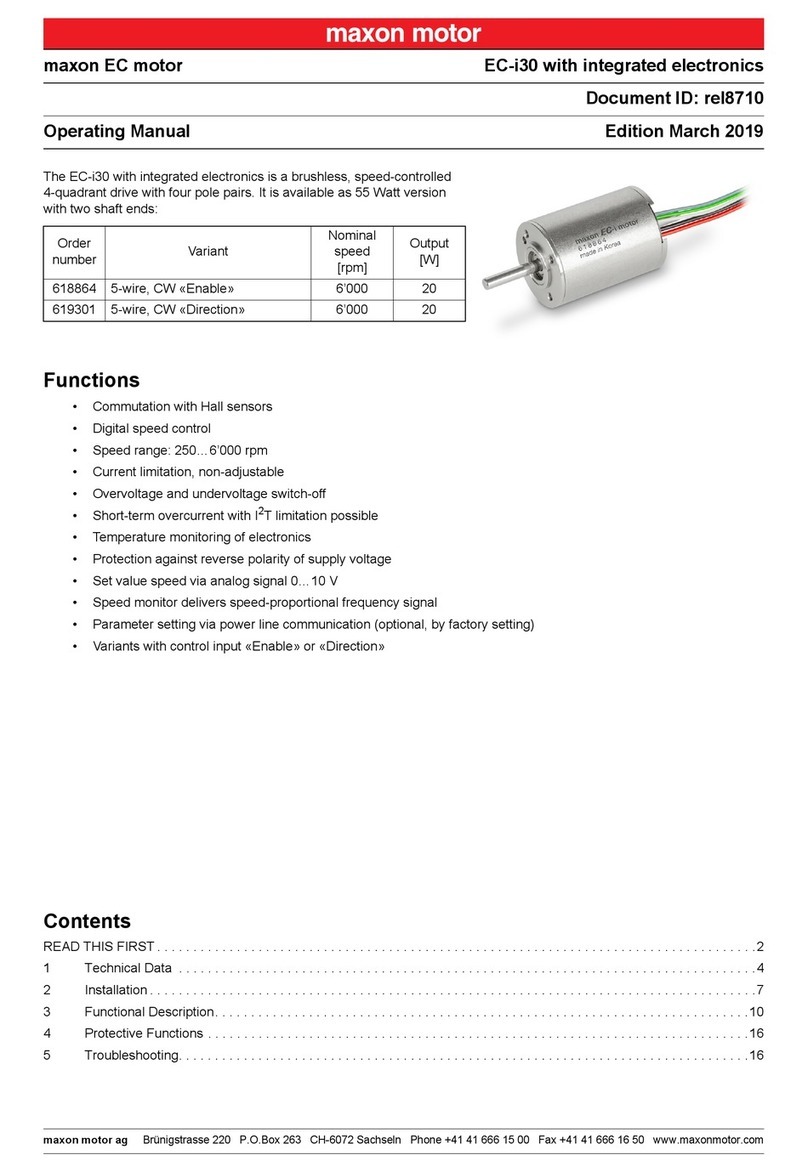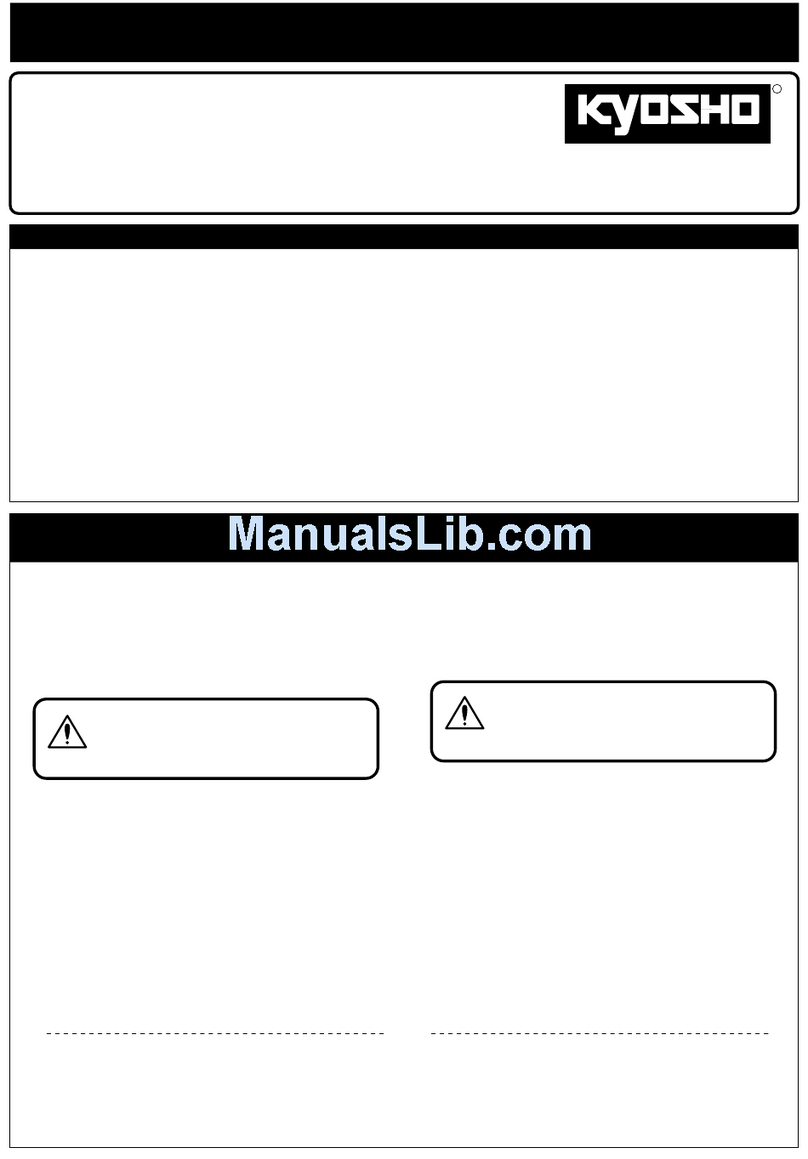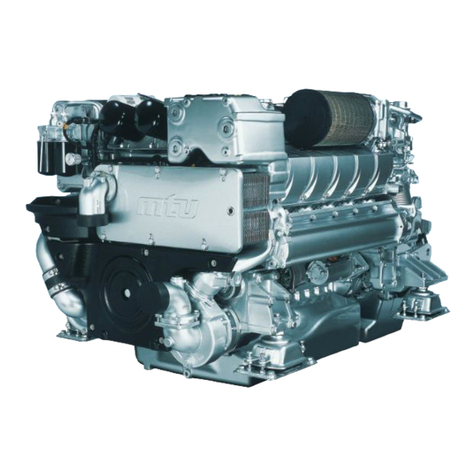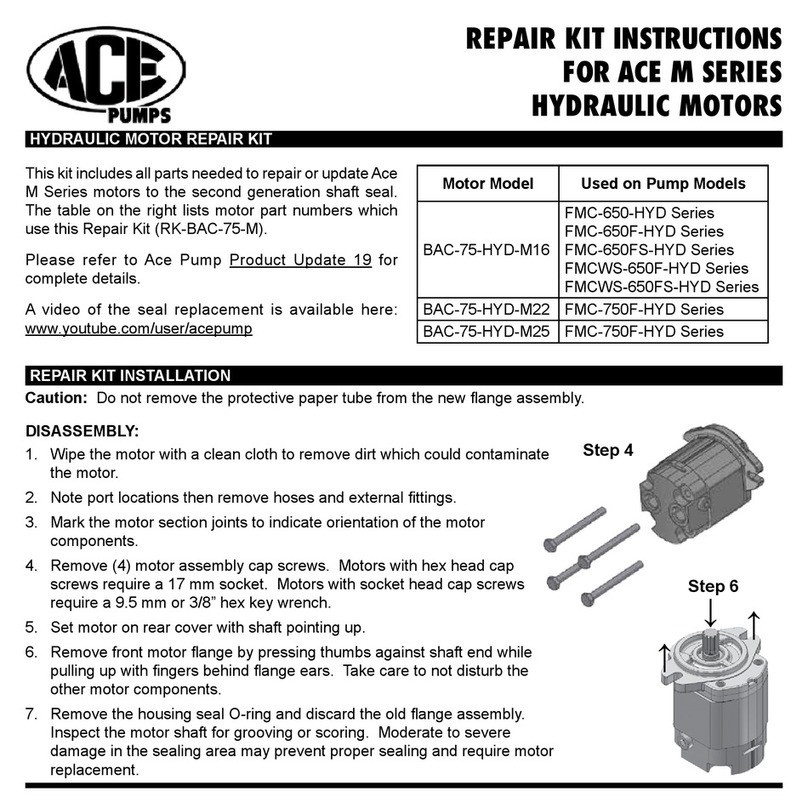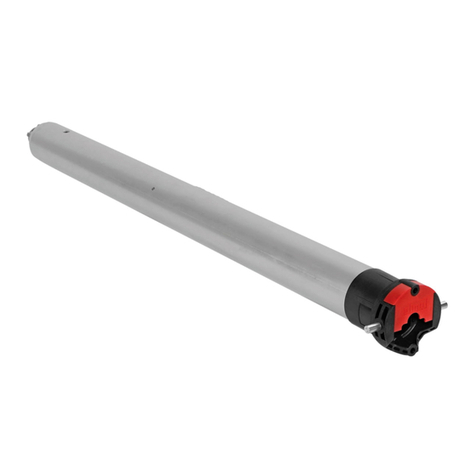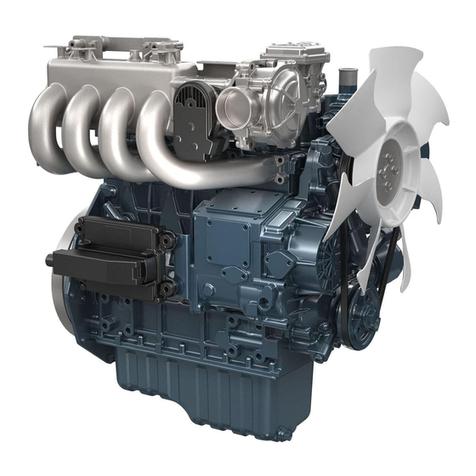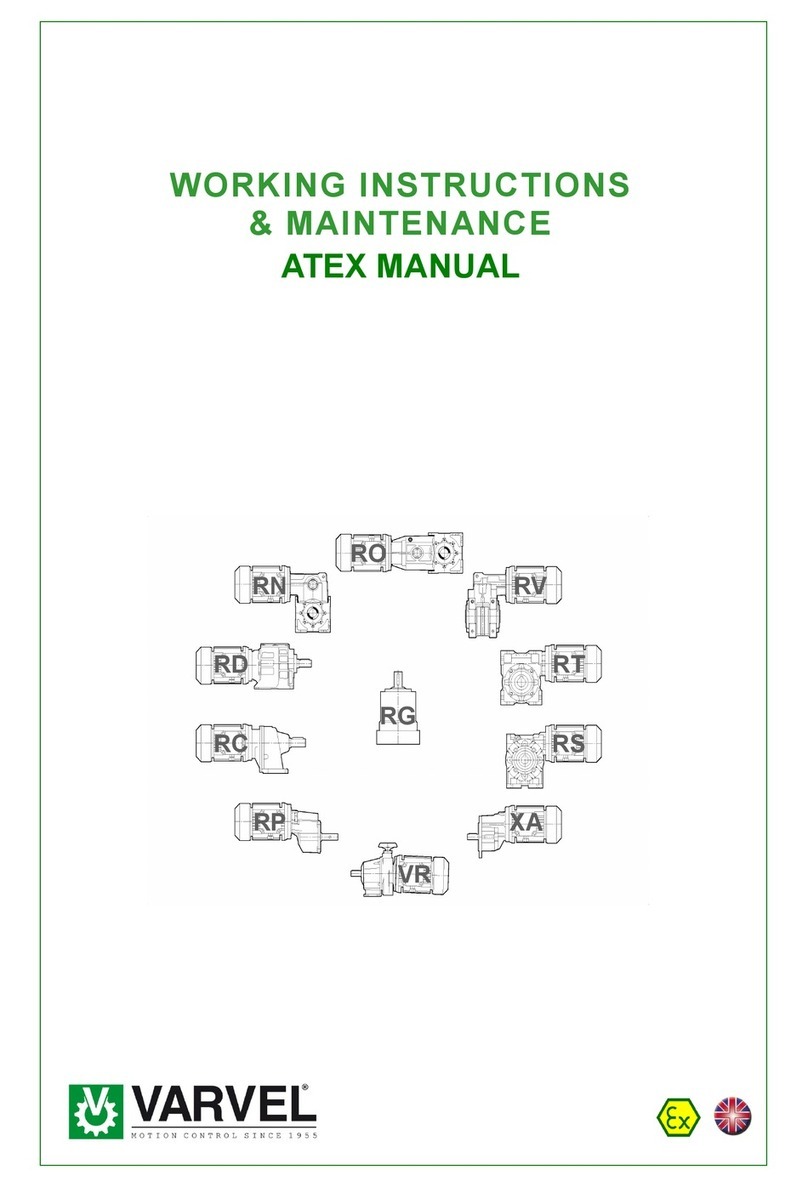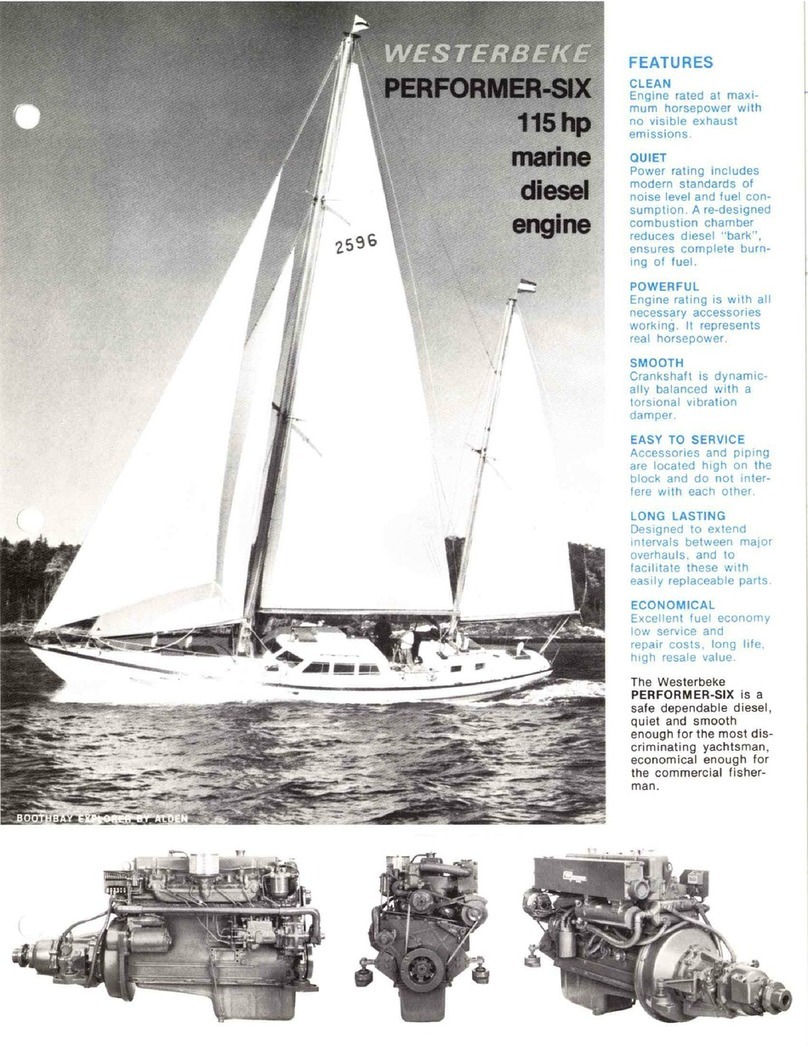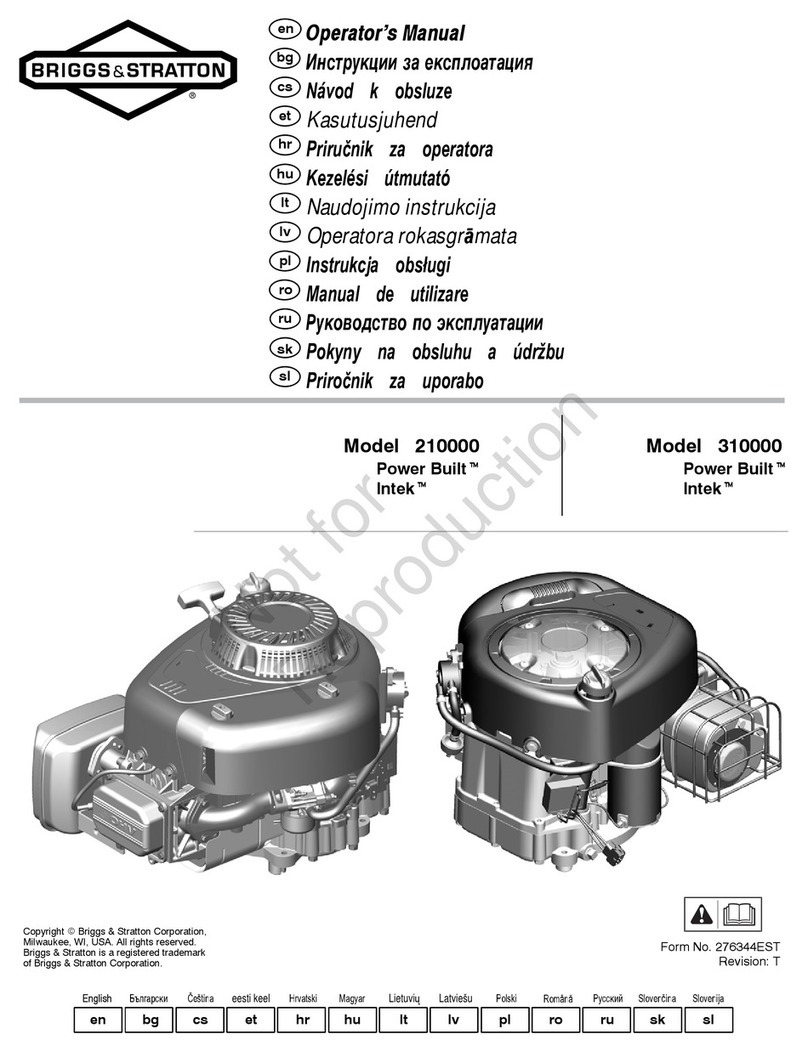FNM HPEP 225 User manual

1
INSTALLATION MANUAL
HPEP 225 - HPEP 250
DIESEL ENGINE & BRAVO STERN DRIVES
First Release
May 2006

2
INSTALLATION MANUAL HPEP 225 / 250
DIESEL ENGINE & BRAVO STERN DRIVES
Table of Contents
General Informa ion ...................................
Notice Installer .........................................
Operation/Duty Cycle Rating Notice ........
Bravo Three Notice Increased Trim-In Range
Capability ……………………………………
Multiple Sterndrive Steering Tie Bar
Arrangement ………………………..
Propeller Rotation on Dual Installations….
Quicksilver Products ................................
Torque Specifications… …………………
Serial Number Decal Placement ..............
Corrosion Protection ...............................
Anti-fouling Paint ....................................
Ins alla ion requiremen s ........................
Transom Thickness and Surface..............
Engine Bed ..............................................
Engine Compartment ...............................
Engine Compartment Ventilation..............
Exhaust System .......................................
Fuel Delivery System .............................
Battery ....................................................
Battery Cables ........................................
Instrumentation ........................................
Power Trim Control ...............................
Power Trim Pump Location ....................
Propeller Selection...................................
Transom Cu ou .........................................
Cu ing Transom ……………………………
Checking Transom Thickness ..................
Ins alling Transom Assembly ...................
Gimbal Housing Preparation………………
Installing Inner Transom Plate ……………
Installing Power Trim Pump .....................
Installing Steering System ......................
Connecting Speedometer Pickup ...........
Connecting Gear Lube Monitor Hose And
Installing Water Inlet Fitting…………………
Engine Ins alla ion ....................................
Shif Cable Ins alla ion ............................
Thro le Cable Ins alla ion and
Adjus men ……………………………………
S erndrive Ins alla ion ...............................
Predelivery Prepara ion .............................
Wiring Diagrams ........................................

3
GENERAL INFORMATION
No ice o Boa Manufac urer/Ins aller
Throughout this publication, Warnings and Cautions (accompanied by the International
Hazard Symbol) are used to alert the installer to special instructions concerning a
particular service or operation that may be hazardous if performed incorrectly or carelessly. -
Observe Them Carefully!
These Safety Alerts, alone, cannot eliminate the hazards that they signal. Strict
compliance to these special instructions when performing the service, plus common sense
operation, are major accident prevention measures.
WARNINGS
Hazards or unsafe prac ices which COULD resul in severe personal injury or dea h!
CAUTION
Hazards or unsafe prac ices which could resul in minor personal injury or produc or
proper y damage.
IMPORTANT: Indica es informa ion or ins ruc ions ha are necessary for proper
ins alla ion and/or opera ion.
This installation manual has been written and published by CMD to aid the boat
manufacturer involved in the application and installation of the products described herein.
It is assumed that these personnel are familiar with marine product application and the
installation procedures of these products, or like or similar products manufactured and
marketed by CMD. Furthermore, it is assumed that they are familiar with, if not trained in,
the recommended installation procedures of these products.
We could not possibly know of and advise the marine trade of all conceivable applications
and installations which might be achieved, and of the possible hazards and/or results of
each conceivable application or installation. We have not undertaken any such wide
evaluation. Therefore, any manufacturer which, or person who, applies or installs the
product in a manner which does not fulfill the requirements listed herein, first must
completely satisfy themselves that neither their safety nor the product will be endangered by
the application or installation procedure selected.
It is the responsibility of the purchaser (whether boat builder or dealer) of a CMD power
package to select the appropriate package (including sufficient horsepower, appropriate
drive unit, correct gear ratio and appropriate propeller) for a given boat. Making such a
selection requires knowledge of the boat, including the boat weight, length, hull design,
intended use, intended duty cycle, and desired speed, all of which is in the exclusive
possession of the purchaser. The appropriateness of a power package can be confirmed
only by thoroughly water testing the boat after installation of the power package. The test
should verify (among other things) that the engine runs in the recommended rpm range, and
that the boat operates as desired. CMD employees are available to provide information
regarding the characteristics and availability of power packages, but the final decision and
responsibility rests with the purchaser.
It is recommended that a CMD Sales Application Engineer (SAE) be contacted for
assistance if specific application or installation problems are encountered.
All information, illustrations, and specifications contained in this manual are based on the
latest product information available at time of publication. CMD reserves the right to make
changes at any time without obligation. As required, revisions to this manual will be sent to
all OEM boat companies.

4
OPERATION/DUTY CYCLE RATING NOTICE
Diesel engine power packages should be applied so that the engines will operate within the
following operational capability rating, or duty cycle, as applicable to engine and installation
PLEASURE DUTY RATING
.
Wide open throttle operation is limited to short periods of time.
IMPORTANT: Damage caused by improper applica ion or failure o opera e wi hin he
opera ional capabili y or du y cycle, will no be covered by he CMD Limi ed
Warran y.
Bravo Three No ice: Trim-In Range Capabili y
The Bravo Three trim cylinders provide the capability for an increased trim-in range. A spacer
can be removed from the trim cylinders to increase the trim-in range by approximately 1- ½
degrees. This will improve the acceleration on some boats by forcing the bow down more
quickly. If the spacers are to be removed, the boat must be water tested to ensure that the
increased trim-in range does not cause any undesired boat handling characteristics (bow-steer,
chine-walk, etc.) if the stern drive is trimmed in while the boat is operated at higher speeds. The
boat should be tested under all conceivable load conditions and maneuvers to ensure that the
additional trim-in does not pose a problem. The final decision and responsibility for use of the
additional trim-in range is left up to the boat manufacturer.
WARNING
I is recommended ha only qualified personnel adjus he Trim-In Limi Spacer. Boa s
mus be wa er es ed af er adjus ing or removing he device o ensure ha he modified
rim-in range does no cause he boa o exhibi an undesirable boa handling
charac eris ic if he s ern drive is rimmed in a higher speeds. Increased rim-in range
may cause handling problems on some boa s ha could resul in personal injury.
PLEASURE DUTY RATING
Model
Engine Specified Opera ing
(RPM)
HPEP 225 - 250
4200

5
MULTIPLE STERNDRIVE STEERING TIE BAR ARRANGEMENTS
With multiple sterndrives it is important to consider which of several possible steering
systems should be selected.
CAUTION
Failure o observe he recommended Tie Bar Arrangemen s as presen ed in his
sec ion could resul in serious damage o he s eering and/or rim sys em compo-
nen s. This damage could adversely affec con rol of he boa .
INTERNAL POWER STEERING WITH INTERNAL TIE BAR ONLY
At the lower end of the performance spectrum (boats not capable of speeds in excess of
96 KMH - 60 MPH) the basic internal tie bar is recommended. It connects the slave
sterndrive to the sterndrive that is directly connected to the factory power steering output.
This internal tie bar is available in a variety of lengths from the sterndrive manufacturer.
INTERNAL POWER STEERING WITH INTERNAL AND EXTERNAL TIE BAR
As a boat moves into a moderate performance range, 96-112 KMH (60-70 MPH) or for a
reduction in steering backlash, an external tie bar should be added. External tie bars are
usually designed to attach at the aft power trim cylinder bosses which is an excellent
location because of its proximity to the propeller. HOWEVER, because of the potential
overstress that can occur if one drive is trimmed much differently than the other, a dual trim
control kit (P/N 90362A3) should be installed so as to limit this potential tilt differential to
about 20°.

6
EXTERNAL POWER STEERING
When boat speeds move past 112 KMH (70 MPH) or if additional steering backlash reduction is
desired, external power steering is recommended. This normally will include an external
tie bar mounted at the same general location of the power steering cylinders which are
generally attached at the top of the sterndrive's drive shaft housing. With this steering
system, no internal tie bar should be used. These steering cylinders can be attached either
inboard (between) or outboard of the sterndrives.
EXTERNAL POWER STEERING WITH LOW EXTERNAL TIE BAR
For the fastest boats (over 128 KMH - 80 MPH) or for the ultimate in steering backlash
reduction, use external power steering, BUT (where mechanically possible) with the
external tie bar mounted at the trim cylinder boss location (as previously described in Internal
and External Tie Bar). This system does not use an internal tie bar.
Impor an MERCURY does not recommend the use of an external tie bar ONLY (no
internal tie bar) when using the internal power steering system. This can cause excessive
loads on the steering components on the drive connected to the internal power steering
system. These increased loads can damage the steering components, resulting in
increased play in the steering of the boat.
PROPELLER ROTATION ON DUAL INSTALLATIONS
Best all-around performance usually is obtained by installing engines so that propellers turn
outboard (looking at the stern → figure a)
a- Inboard Propeller Rotation
b- Outboard Propeller Rotation (Preferred)
c- RH Rotation
d- LH Rotation

7
Quicksilver Produc s
ORIGINAL PRODUCTS FOR STERN DRIVE
INSTALLATION
1
Except Bravo X – Model U- joints
Descrip ion
Par Number
Engine Coupler Spline Grease
92-802869A1
2-4-C Marine Lubricant with Teflon
92-802859A1
U-Joint and Gimbal Bearing Grease
1
92-802870A1
Special Lubricant 101
92-802865A1
Liquid Neoprene
92-25711-3
Power Trim and Steering Fluid
92-802880A1
Dexron III - Automatic Transmission Fluid
Obtain Locally
Perfect Seal
92-34227-1
Transom Drilling Fixture
91-43693A2
Engine Alignment Tool
91-805475A1
Shift Slide Stabilizer Tool
91-12427
Rear Engine Mounts Drilling tool
91-807903A1
Loctite 565 Obtain Locally

8
TORQUE SPECIFICATIONS
Descrip ion
Torque
Nm
Ib- in.
Ib- f
Speedometer Pickup Barb Fitting
1.5
13
Exhaust Pipe or Block-off Plate
31
23
Power Steering Hose Fittings
31
23
Power Trim Pump Hose Fittings
14
125
Propeller Nut (Bravo 1 e 2)
1
75
55
Front
136
100
Propeller Nut
(Bravo 3)
1
Back
81 60
Rear Engine Mounts 51
38
Steering Cable Couplet Nut 47
35
Steering System (Pivot Bolts)
34
25
Stern Drive Fasteners
68
50
Transom Assembly Fasteners
31
23
Seawater Pickup Fitting
5
45
Power Trim Cylinder Fasteners
Keep tightening up to contact point
1
Amount specified is MINIMUM.
Serial Number Decal Placemen
There are three sets of engine, transom assembly and stern drive serial number decal strips
provided with each power package. One set should be used for each of the following
• Engine Specification Decal
• Warranty Registration Card
• Operation, Maintenance and Warranty Manual identification page.

9
CORROSION PROTECTION
This power package is equipped with various anodes and a MerCathode System. A
MerCathode Monitor also is available to allow the operator to check the operation of the
MerCathode System with the push of a button. Refer to Mercury Precision Parts /
Quicksilver Accessories Guide for part numbers.
Boats that are connected to AC shore power require additional protection to prevent
destructive low voltage galvanic currents from passing through the shore power ground
wire. A Quicksilver Galvanic Isolator can be installed to block the passage of these currents
while still providing a path to ground for dangerous fault (shock) currents. Refer to Mercury
Precision Parts / Quicksilver Accessories Guide for part number.
IMPORTANT: If AC shore power is no isola ed from boa ground, he MerCa hode
Sys em and zinc anodes may be unable o handle he increased galvanic corrosion
po en ial.

10
ANTIFOULING PAINT
IMPORTANT: Corrosion damage ha resul s from he improper applica ion of an i-
fouling pain will no be covered by he limi ed warran y.
Pain ing Boa Hull or Boa Transom: Antifouling paint may be applied to boat hull and boat
transom but you must observe the following precautions
IMPORTANT: DO NOT pain anodes or MerCa hode Sys em reference elec rode and
anode, as his will render hem ineffec ive as galvanic corrosion inhibi ors.
IMPORTANT: If an i-fouling pro ec ion is required for boa hull or boa ransom,
copper or in base pain s, if no prohibi ed by law, can be used. If using copper or in
based an i-fouling pain s, observe he following:
• Avoid an elec rical in erconnec ion be ween he Mercury MerCruiser Produc ,
Anodic Blocks, or MerCa hode Sys em and he pain by allowing a minimum of
1-1/2 in. (40 mm) UNPAINTED area on ransom of he boa around hese i ems.
a - Painted Boat Transom
b - Minimum 1-1/2 in (40 mm) UNPAINTED Area Around Transom Assembly
NOTE: Drive unit and transom assembly can be painted with a good quality marine paint
or an anti-fouling paint that DOES NOT contain copper, tin or any other material that could
conduct electrical current Do not paint drain holes, anodes, MerCathode system and items
specified by boat manufacturer

11
INSTALLATION REQUIREMENTS
WARNING
Elec rical sys em componen s on his engine are no ex ernal igni ion pro ec ed. DO NOT
STORE OR UTILIZE GASOLINE ON BOATS EQUIPPED WITH THESE ENGINES, UNLESS
PROVISIONS HAVE BEEN MADE TO EXCLUDE GASOLINE VAPORS FROM ENGINE
COMPARTMENT (REF: 33 CFR). Failure o comply could resul in fire, explosion and/or severe
personal injury.
Transom Thickness and Surface
IMPORTANT: Transom hickness and surface plane (fla ness) mus be con rolled where he
s erndrive uni moun s.
Transom hickness and surface mus conform o he following:
Transom Specifica ions
Thickness
Between 2 - 2-1/4 in. (51 - 57 mm) for 8 in. (203 mm) to either
side of the vertical centerline
1
1
Parallelism
Inner and outer surfaces must be parallel within 1/8 in. (3 mm)
Surface Plane
Transom surfaces in area where transom assembly will be
mounted (includes vertical as well as horizontal dimensions)
Inner Surface - Flat within1/8 in. (3 mm) Outer Surface - Flat
within1/16 in. (2 mm)
Angle
10-16 Degrees
1 If using a molded composite fiberglass transom material like the Virtual Engineerer Composite (VEC), the al-
lowable transom thickness range is 1.90 in. (49 mm) - 2.25 in. (57 mm).
a - Transom Thickness
b - Inner Surface
c - Outer Surface
d - Transom Plate Coverage
e - Transom Angle

12
Engine Bed
Distance between starboard and port engine mount is 23-1/2 in. (600 mm). Engine bed must
position engine so that a minimum of 1/4 in. (6 mm) up and down adjustment still exists on
mounts after performing final engine alignment. This is necessary to allow for realigning
engine in the future.
NOTE: Although the engine mounts allow some adjustment, it is a good practice to
ensure that the front and rear mount locations in the vessel are in parallel planes This
may be checked by tying a string from the left front mount location to the right rear mount
location and another from right front to left rear The strings should touch where they
cross
ENGINE COMPARTMENT
ENGINE COMPARTMENT
WARNING
Boa ing s andards (NMMA, ABYC, e c.) and Coas Guard regula ions mus be
adhered o when cons ruc ing he engine compar men .
Care must be exercised in the design and construction of the engine compartment. Seams must be located
so that any rain water that may leak through the seams is directed away from the air intake system.
CAUTION
Wa er ha runs on o he air in ake may en er he engine and cause serious damage o
in ernal engine and/or urbocharger par s.
IMPORTANT: C.M.D. srl will no honor any warran y claim for engine damage as a resul of wa er
en ry.

13
Engine Compar men Ven ila ion
IMPORTANT: This sec ion does no cover he design of he ven ila ion sys em as i
per ains o ven ila ion of fumes from he engine compar men . The requiremen s for
ven ila ion of fumes varies considerably from one boa design o he nex , as well as
from coun ry o coun ry, and herefore, he boa manufac urer is responsible for
ensuring heir applica ion is in compliance wi h he appropria e indus ry regula ions
and s andards.
GENERAL INFORMATION
According to boating standards and Coast Guard regulations the engine compartment
ventilation system has multiple tasks. Included are the following
1. To supply the engine with combustion air.
2. To maintain a low temperature in the engine compartment.
Fresh air should enter the engine compartment as low as possible and the heated air should
be discharged from the highest point.
If a separate air shaft (or similar) is used to provide engine compartment ventilation, or
additional ventilation, care must be taken to prevent seawater and spray from entering it.
COMBUSTION AIR REQUIREMENTS
Engine compartments with natural draft ventilation must have vent openings of sufficient
size and location to accomplish the tasks previously outlined.
IMPORTANT: The size of ven ila ion openings mus be increased if any auxiliary
equipmen is loca ed in he engine compar men .
The combus ion air requiremen (per engine) for the specified engines at wide open
throttle are shown in the chart below
IMPORTANT: Follow regula ions and boa ing s andards for engine compar men ven ila ion.
Combus ion Air Requiremen s (Per Engine)
Model
Engine Air Requiremen s a WOT
HPEP 225 - 250
10 m
3
/ min. (353 ft
3
/ min.)
In order to guarantee the optimum engine temperature (30-40°C), it is necessary to make sure that the
engine compartment ventilation meets the following requirements
• Inlet (combustion air) the surface must not be lower than 228 cm
2
per engine. We recommend that
the air inlets are positioned in such a way as to favor a continuous air flow towards the engine’s air
filter.
• Hot air outlet the surface must not be less than 100 cm
2
per engine and the air outlets must be
positioned in the upper part of the engine compartment.
For all those applications that do not allow for these requirements to be fully met, it is required that the
air inlets must be connected directly from the outside of the engine compartment with an appropriate
water system and also we require that a ventilation system must be installed so that the hot air flow is
forced from the engine compartment to the outside. All the components must meet the European
Community standards and regulations.
CAUTION!
If he empera ure a he engine air inle exceeds 40°, he engine may be seriously damaged.

14
COMPARTMENT TEMPERATURE - SPECIFICATIONS
Too high an inlet air temperature lowers the engine performance. Therefore
Engine compartment temperature shall not exceed outside air temperature by more than
17 degrees C (30 degrees F).
Since many factors influence engine compartment temperature, temperature
measurements should always be carried out.
COMPARTMENT TEMPERATURE -TESTING
Observe the following
• The boat being tested shall be a standard production boat fitted as it would be for
delivery to a dealer.
• Temperature test meter used shall be of the type that can be read without opening the
engine cover.
• During the test, in Step 1., engine compartments are to remain closed. No outside air
is to be forced into the engine compartment during the test and the bilge blower should
not be running.
1. Engine Running and Heat Soak Test
a. Use 1 meter and 1 thermo couple. Position the thermo couple at the engine air inlet
(air filter).
b. Start engine to warm it up. After engine is at its normal operating temperature, run
engine at WOT for 20 minutes. Record temperature readings at 5 minute intervals.
IMPORTANT: If he empera ure a he engine air inle (air fil er) exceeds
specifica ions, he engine compar men will need addi ional engine combus ion air
openings, or an increase in engine compar men ven ila ion area, un il he
empera ure remains wi hin specifica ion.

15
Exhaus Sys em
IMPORTANT: I is he responsibili y of he boa manufac urer or ins alling dealer o
properly loca e he engine and ins all he exhaus sys em. Improper ins alla ion may
allow wa er o en er he exhaus manifolds and combus ion chambers and severely
damage he engine. Damage caused by wa er in he engine will no be covered by
C.M.D. srl Warran y, unless his damage is he resul of defec ive par (s).
Verify that the riser provides the required dimension "c," or a distance greater than "c," as
indicated.
Model
"c" = "a" Minus "b"
HPEP 225 - 250
"c" Mus Be 280 mm (11 inches) or More
Engine Wi h S andard Riser
a - From Waterline To Top Of Transom
b - From Highest Point On Exhaust Riser To Top Of Transom
c - From "a" Minus "b"
d - Waterline At Rest

16
Fuel Delivery Sys em
WARNING
Boa ing s andards (CEE) and Coas Guard regula ions mus be adhered o when ins alling
fuel delivery sys em.
GENERAL
The main concern of a boat's fuel system is safety; this must be achieved through a technically sound
installation and constant inspection.
The fuel system, from the filler pipe to the fuel pump is the same, in principle, for all boats.
The Fuel Tank is an integrated component of the boat. Refer to the special information on service and
maintenance from the tank manufacturer.
Only a few points related to function and safety are listed here.
• All connections should be on the upper side of the tank.
• The drain plug at the lowest point on the tank serves to permit the removal of water and
sediment.
• The filler pipe outer diameter should be at least 2 in. (50 mm).
• The tank breather pipe must have an inner diameter (I.D.) of at least 1/2 in. (13 mm) and
must be fitted with a swan neck to prevent water from entering the tank.
It is recommended that the exact route and length of the fuel lines be established at the first installation of
the engine to prevent problems later in connecting them to the engine.
All fuel lines must be well secured. The holes where the lines run through the bulkheads should be
carefully rounded off, or protected with rubber grommets. This prevents damage to the lines from
abrasion.
FUEL CONNECTIONS
The following, but not limited to the following, additional fuel connection related points, applying to
all engines unless otherwise stated, must be considered.
1. Fuel pickup should be at least 1 in. (25 mm) from the bottom of fuel tank, to prevent
picking up impurities.
2. Fuel inlet fitting is an 8 mm (5/16 in.) barbed fitting attached to the fuel supply pump.
3. A flexible fuel line must be used to connect fuel supply line to fuel inlet fitting on the
engine to absorb deflection when engine is running. Injection pump fuel return line must
also have a flexible rubber hose segment.
4. Fuel supply lines must not be smaller than 5/16 in. (8 mm) I.D. tube. A fuel return line
between engine and fuel tank is required, having the same size I.D. as the supply line.
5. On Mul i-Engine Diesel Ins alla ions: Use a separate tube for the fuel supply line and
fuel return line, for each engine.
6. Larger diameter (than previously specified) lines and fittings must be used on
installations requiring long lines or numerous fittings.
7. Fuel line(s) should be installed free of stress and firmly secured to prevent vibration
and/or chafing.
8. Sharp bends in fuel lines should be avoided.

17
DIESEL FUEL FILTERS AND FUEL ADDITIVES
There is the possibility that contamination of diesel fuel and algae growth in the diesel fuel could block
the lift pump resulting in poor performance.
IMPORTANT: The engine is provided wi h an elemen ype fuel fil er, bu o help elimina e
wa er and dir i is recommended o use an addi ional 10 micron, 40 l /min (60 gpm) flow ra ed
fil er ha has a wa er rap.
It is recommended that in CMD applications, an additional fuel filter equipped with a water trap be
installed before the lift pump. CMD srl recommends a 10 micron, 60 gallon per minute rated filter, such
as a Racor Model 500® (Quicksilver P/N 35-850481 with SAE threads, and 35-809867 with Metric
threads) or equivalent. This will help to filter out contaminants in diesel fuel.
Select a suitable position in the fuel system between the fuel supply pump and the fuel tank for the
additional filter The position selected must be free from vibrations, and allow for easy inspection and
replacement.
It is also recommended that a diesel fuel additive be used to combat algae growth, particularly in
warmer climates. Additives reduce the chances of algae growth in the diesel fuel.
Ba ery
IMPORTANT: S andards and regula ions mus be adhered o when ins alling
ba ery. Be sure ba ery cable ins alla ion mee s he pull es requiremen s and ha
posi ive ba ery erminal is properly insula ed in accordance wi h regula ions.
IMPORTANT: I is recommended (required in some s a es) ha he ba ery be ins alled
in an enclosed case. Refer o regula ions for your area.
IMPORTANT: Engine elec rical sys em is nega ive (-) ground.
Select a battery that meets all of the following specifications
• 12-volt marine type.
• Discharge intensity not lower than 850 A.
• Tapered post connectors or side terminal connectors. Do not use a battery with wing nut
connectors.
• Battery capacity rating of at least 200 Ah.
• Good resistance to charge/discharge cycles.

18
Ba ery Cables
Select proper size positive (+) and negative (-) battery cables, using chart. Battery should
be located as close to engine as possible.
IMPORTANT: Terminals mus be soldered o cable ends o ensure good elec rical
con ac . Use elec rical grade (resin flux) solder only. Do no use acid flux solder,
as i may cause corrosion and a subsequen failure.
Ba ery Cable Leng h
Minimum Cable Gauge
Fino a 0.9m (3 ft)
2( 35mm
2
)
0.9- 1.1m (3-3-3/4 ft)
1 ( 50mm
2
)
1.1 - 1.4m (3-3/4 - 4-3/4 ft)
0( 50mm
2
)
1.4 - 1.8m (4-3/4 - 6 ft)
00 ( 70mm
2
)
1.8-2.3m (6-7-1/2 ft)
000 ( 95mm
2
)
2.3-2.9m (7-1/2-9-1/2 ft)
0000 (120mm
2
)
2.9-3.7m (9-1/2- 12 ft)
00 ( 70mm
2
)
3.7-4.6m (12- 1 5 ft)
000( 95mm
2
)
4.6-5.8m (15- 19 ft)
0000(120mm
2
)
Two cables of specified gauge required for positive and two required for negative.

19
No es

20
Elec rical connec ion of he ba eries in case of win ins alla ion
Here below you will find the scheme for the electrical connection of the batteries in case of twin installation.
If you look further below, you will find another scheme which is referred to the case when another battery
(for onboard services such as TV, refrigerator, etc.) is used (suggested scheme). Such connections use
selection switches, which you can easily find on the market.
Elec ronical connec ion for ba eries
Here below you will find a detailed description of the electrical connection of the batteriesin the case that it
is necessary to use an auxiliary battery. As you will be able to see, this scheme uses a device that makes
sure that the alternator charges also the auxiliary battery without having the auxiliary battery getting
discharged by transferring power to the engine battery. This device is an automatic selection switch.
Obviously in case there is a twin installation with two engines on the same boat, this scheme refers to the
auxiliary battery and to the battery and alternator of one of the two engines
Selec ion swi ch
Selec ion swi ch
Ba ery 1
Ba ery 2
Engine s ar er
engine 1
Engine s ar er
Engine 2
Al erna or
engine 1
Al erna ore
mo ore 2
TWO ENGIN
ES
–
TWO BATTERIES
TWO ENGINES
–
TWO STARTING BATTERIES
–
ONE DOMESTIC BATTERY – TWO SELECTION SWITCHES
This manual suits for next models
1
Table of contents
Other FNM Engine manuals

